Continuing my Conan reread for Cimmerian September, the sixth published Conan story is The Pool of the Black One, which arrived in the October 1933 issue of Weird Tales magazine.
As with Xuthal of the Dusk, Howard wastes no time bringing Conan into our story. A concubine named Sancha, lounging on the deck of a pirate ship called The Wastrel, sees the Cimmerian climb up on board and she’s immediately struck by his muscled form:
The intruder was a stranger to her. Water ran in rivulets from his great shoulders and down his heavy arms. His single garment—a pair of bright crimson silk breeks—was soaking wet, as was his broad gold-buckled girdle and the sheathed sword it supported. As he stood at the rail, the rising sun etched him like a great bronze statue. He ran his fingers through his streaming black mane, and his blue eyes lit as they rested on the girl.
Zaporavo, the narcissistic ship captain, is amazed that this strange barbarian has swam this far and assumes he can just board the ship and join his crew, but Conan manages to socially disarm him with unflagging confidence:
“I found it necessary to leave the rendezvous at Tortage before moonrise last night,” answered Conan. “I departed in a leaky boat, and rowed and bailed all night. Just at dawn I saw your topsails, and left the miserable tub to sink, while I made better speed in the water.”
“There are sharks in these waters,” growled Zaporavo, and was vaguely irritated by the answering shrug of the mighty shoulders.
There’s an unusual bit of narrative lamp shading here, directly telling the reader that by accepting Conan aboard his ship the captain is now doomed, but for me it creates intrigue instead of diffusing it:
He hesitated, and doing so, lost his ship, his command, his girl, and his life. But of course he could not see into the future, and to him Conan was only another wastrel, cast up, as he put it, by the sea. He did not like the man; yet the fellow had given him no provocation.
We now know the broad brushstrokes of where this will lead, but not when or how, and that’s more than enough to keep momentum rolling.
The Cimmerian is ready to be hazed by the sailors and, casually breaking the first fool who steps forth to challenge him, earns a spot amongst the sailors. What follows is an enjoyable montage that keenly contrasts Conan’s natural charisma with Zaporavo’s unlikeable ignorance. It really sells Conan as a leader, worthy of the crew’s respect and admiration:
He did the work of three men, and was always first to spring to any heavy or dangerous task. His mates began to rely upon him. He did not quarrel with them, and they were careful not to quarrel with him. He gambled with them, putting up his girdle and sheath for a stake, won their money and weapons, and gave them back with a laugh.
Sancha begins lusting after Conan and Zaporavo is distracted, obsessed as he is with maps that could lead to ancient treasure. When the ship comes to land in a strange island bay, the crew feast on foreign fruit from tropical trees and the paranoid captain sets off into the jungle alone, unwilling to share any potential spoils to be found, setting up the next chapter.
Conan is always a protagonist, but not necessarily a “hero” in the traditional sense. What follows in chapter two might be unexpected for some readers, with Conan confronting Zaporavo and an exciting one-on-one duel that leaves the captain dead:
Zaporavo was the veteran of a thousand fights by sea and by land. There was no man in the world more deeply and thoroughly versed than he in the lore of swordcraft. But he had never been pitted against a blade wielded by thews bred in the wild lands beyond the borders of civilization. Against his fighting-craft was matched blinding speed and strength impossible to a civilized man. Conan’s manner of fighting was unorthodox, but instinctive and natural as that of a timber wolf. The intricacies of the sword were as useless against his primitive fury as a human boxer’s skill against the onslaughts of a panther.
The moment Conan came aboard he intended to take over, and the captain’s distracted obsession left him wide open to the Cimmerian’s plan – He wins the hearts and minds of the crew, then sees his opportunity when the captain heads off on his own. Conan doesn’t stab Zaporavo in the back, he confronts the man face-to-face, but he’s also taking everything, including the man’s life. It’s simultaneously manipulative and honorable, conniving and courageous. For better or for worse, the Hyborian Age rewards those with the strength to seize what they want and the willpower to hold onto it.
The second half of the story is where all the supernatural business begins and, for me, it’s actually less interesting than the writing that preceded it. A conclave of onyx-skinned humanoid creatures collect people who venture onto their island, kidnapping them when they eat the island’s strange fruit and fall unconscious. There are creepy descriptions of their rituals, and blood-pumping action sequences as Conan saves Sancha and as many sailors as he can from their clutches. It’s appropriately punchy and pulpy throughout, but also doesn’t have a great deal of surprises.
I do like when Conan is backed into a corner and needs to start kicking ass though:
Conan yelled stridently and struck them like a razor-edged thunderbolt. They fell like ripe grains beneath his blade, and the Zingarans, shouting with muddled fury, ran groggily across the court and fell on their gigantic foes with bloodthirsty zeal. They were still dazed; emerging hazily from drugged slumber, they had felt Sancha frantically shaking them and shoving swords into their fists, and had vaguely heard her urging them to some sort of action. They had not understood all she said, but the sight of strangers, and blood streaming, was enough for them.
At just over 11,000 words, The Pool of the Black One hits right in the middle of the Conan canon, delivering sword & sorcery swagger and maintaining Conan’s reputation as a staple of Weird Tales. I was pleasantly surprised at how much I enjoyed the opening half of the story this time.
The comic adaptation in Savage Sword of Conan #22 with art by John Buscema and Sonny Trinidad maintains the marathon of excellence the black & white magazine delivered in the late 1970’s. The draftsmanship and storytelling are both top notch throughout.
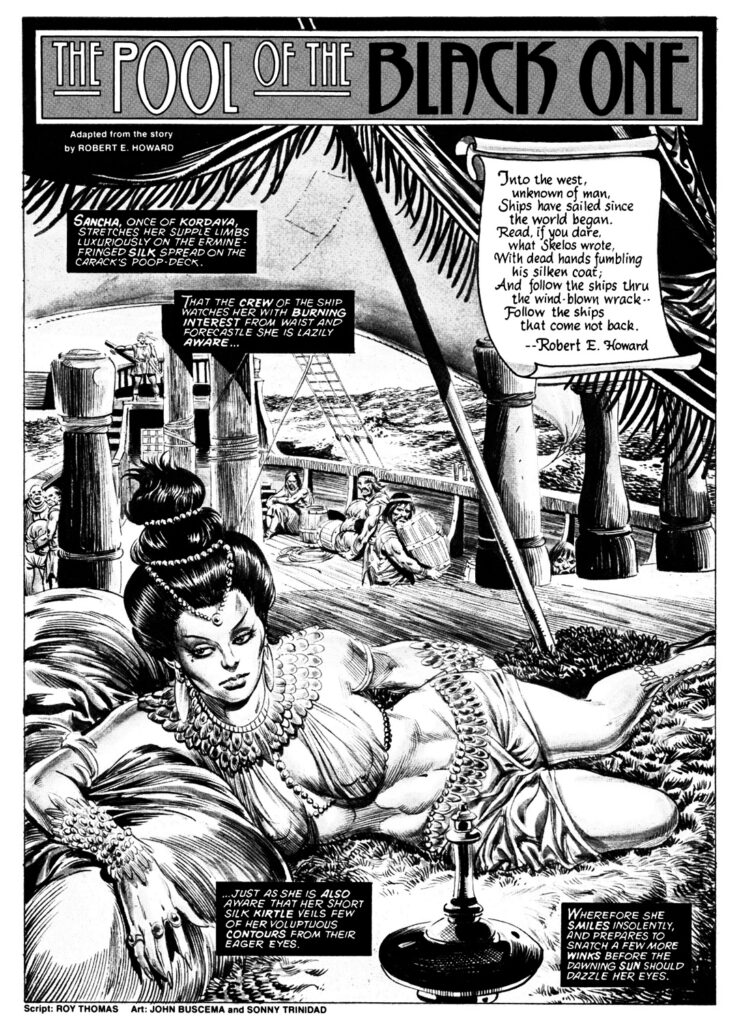
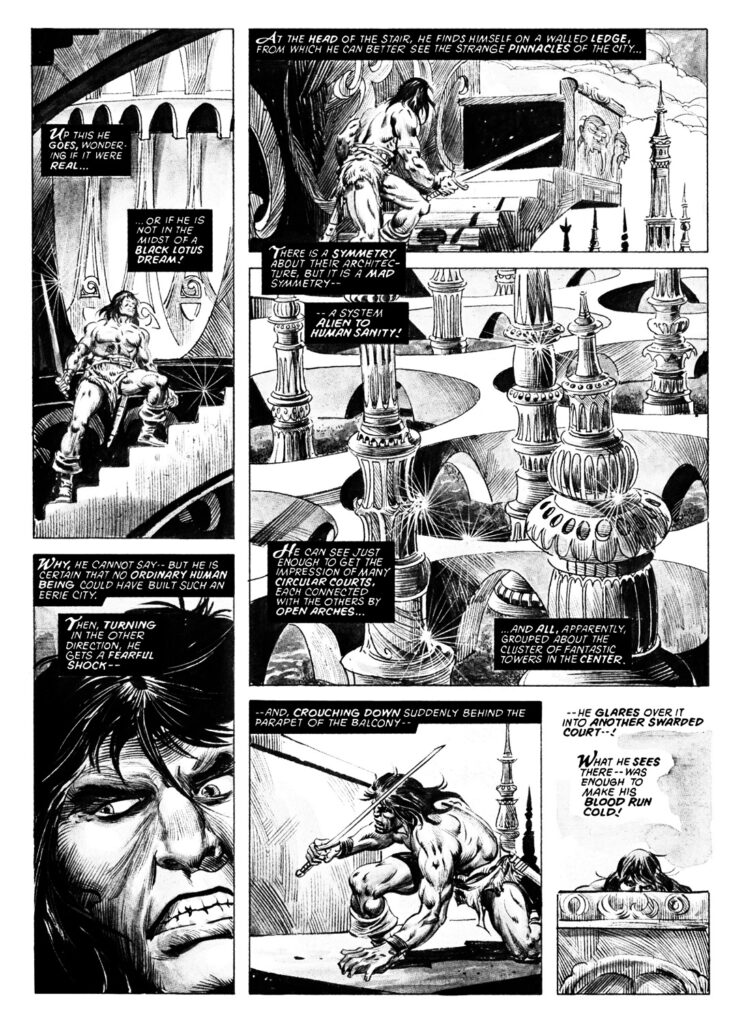
If you haven’t read the original Conan prose stories, I recommend the Del Rey 3-book set, which has each story unedited and essays that add context around their publication.
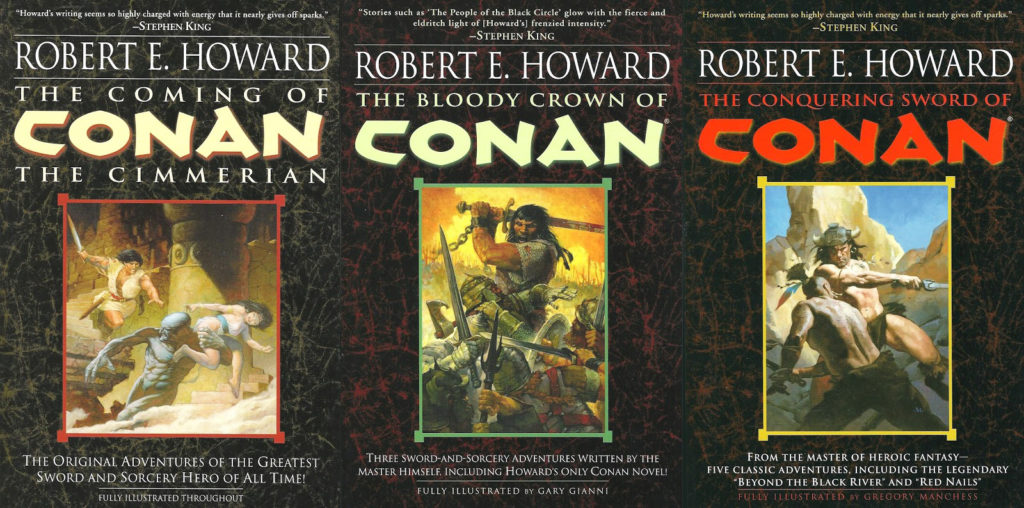


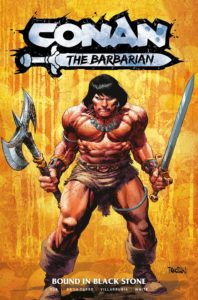



 Zub on Amazon
Zub on Amazon Zub on Instagram
Zub on Instagram Zub on Twitter
Zub on Twitter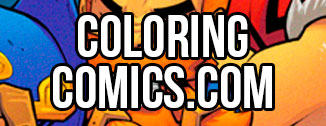
Glad you respect the original material enough to get inspired for further stories. Hope you’ll produce such stories that they’ll enter the hall of fame right next to REH’s and Roy Thomas’s…